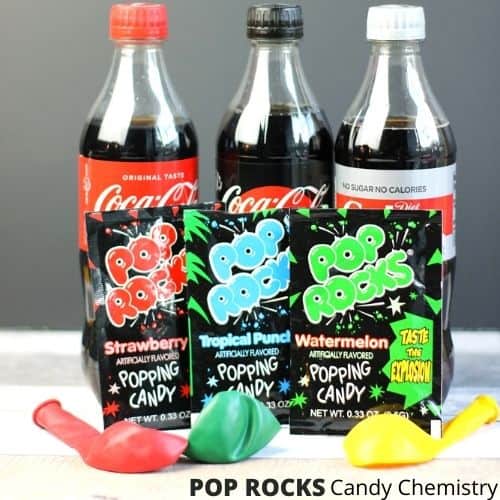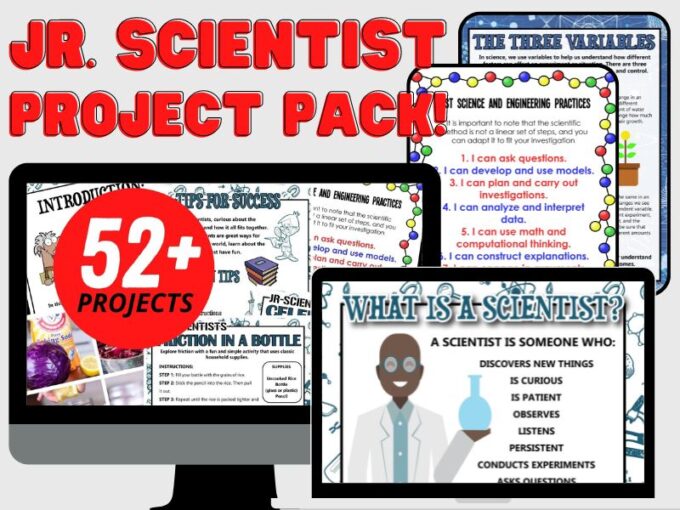Pop rocks candy are an awesome experience! A fun candy to eat, and now you can turn it into an easy Pop Rocks science experiment too! What happens when you mix soda with pop rocks? Can pop rocks and soda really make you explode? Take the Pop Rocks and soda challenge with this cool chemistry experiment.
POP ROCKS AND SODA CHALLENGE
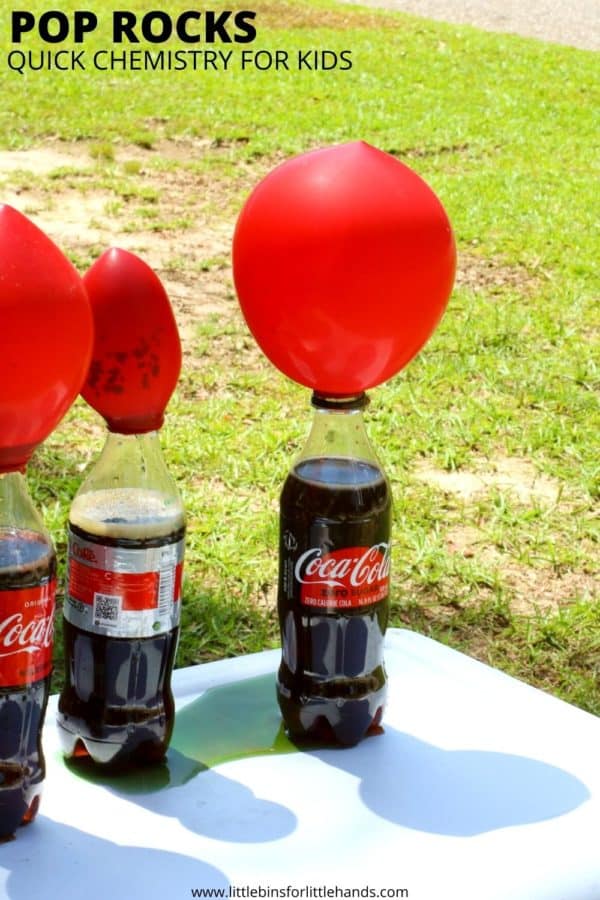
Pop Rocks and Soda
Our Pop Rocks and soda experiment is a fun variation on our baking soda and vinegar reaction. Blow up a balloon using just two basic ingredients, soda and Pop Rocks.
We love fizzing experiments and have been exploring chemistry for kindergarten, preschool, and early elementary for almost 8 years. Make sure to check out our collection of easy science experiments for kids.
Our science experiments are designed with you, the parent or teacher, in mind! Easy to set up, quick to do, most activities will take only 15 to 30 minutes to complete and are heaps of fun! Plus, our supplies lists usually contain only free or cheap materials you can source from home!
Grab a packet of Pop Rocks and some soda and find out what happens when you mix them together!
Use the scientific method with kids
The scientific method is a process or method of research. A problem is identified, information about the problem is gathered, a hypothesis or question is formulated from the information, and the hypothesis is put to test with an experiment to prove or disprove its validity.
Sounds heavy… What in the world does that mean?!?
The scientific method can simply be used as a guide to help lead the process of discovery. You don’t need to try and solve the world’s biggest science questions! The scientific method is all about studying and learning things right around you.
As kids develop practices that involve creating, gathering data evaluating, analyzing, and communicating, they can apply these critical thinking skills to any situation.
To learn more about the scientific method and how to use it, CLICK HERE.
Even though the scientific method feels like it is just for big kids this method can be used with kids of all ages! Have a casual conversation with younger kiddos or do a more formal notebook entry with older kiddos!
Use our free printable science worksheets below to make the process even easier!
Looking for easy to print science activities?
Click here for your FREE Science Pack For Kids
Bonus Pop Rocks Experiments
Here are several ways you can apply the scientific method by changing the independent variable and measuring the dependent variable.
- Use one variety of soda and test different varieties of Pop Rocks to see if each has a similar reaction. Measure the balloons using a tape measure to decide which variety created the most gas.
- Using the same variety of Pop Rocks and test different varieties of soda to see which emits the most gas. (We found Diet Coke tends to win! See our Diet Coke and Mentos Experiment)
Make sure to save some Pop Rocks for another fun experiment exploring viscosity. Test whether Pop Rocks are louder when placed in liquids of different viscosity or thickness. Click here for our viscosity Pop Rocks Experiment!
Pop Rocks and Soda Experiment
SUPPLIES:
- 3 bags Pop Rocks Candy Variety Pack
- 3 (16.9 to 20-ounce bottles) soda in different varieties
- Balloons
- Funnel
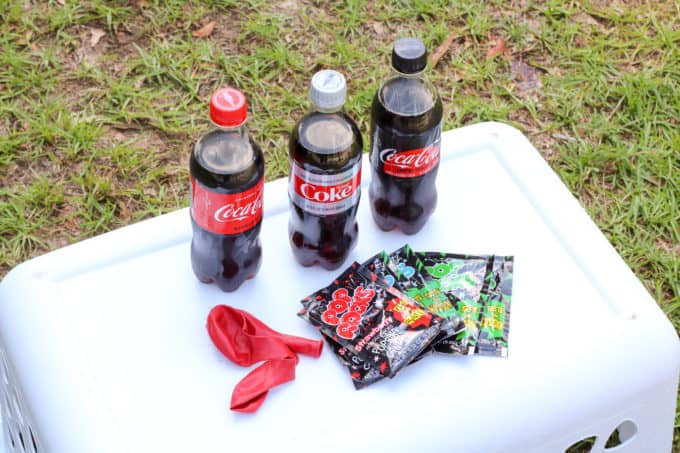
Instructions:
STEP 1. Stretch the balloon with your hands, making an effort to expand the neck of the balloon.
TIP: Avoid blowing into the balloon as the moisture from your mouth will make the candy stick to the inside of the balloon later on.
STEP 2. Place the mouth of the balloon over the small opening of a funnel. Then pour one package of Pop Rocks into the funnel and tap the funnel to force the Pop Rocks down into the balloon.
TIP: If the candy refuses to move through the funnel, try pushing the candy with a bamboo skewer without putting a hole in the balloon.
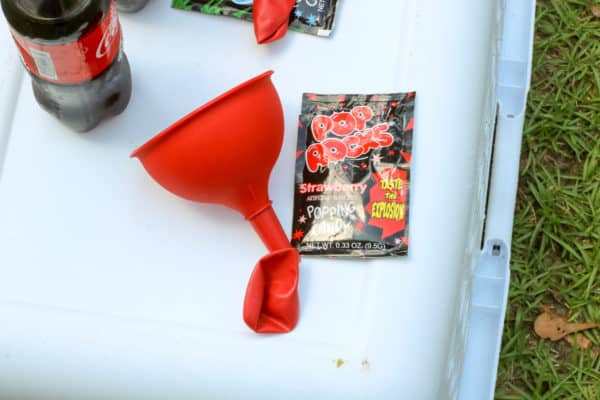
STEP 3. Open the soda and place the opening of the balloon over the top, taking care to have the mouth of the balloon completely over the top of the bottle without dropping the candy into the balloon.
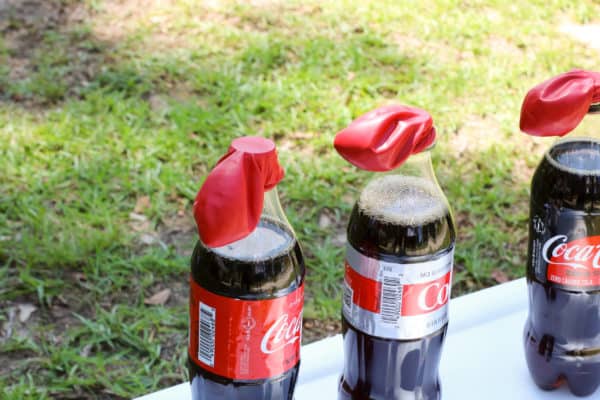
STEP 4. Tip the balloon up and shake slightly (if needed) to transfer the candy into the soda. Watch what happens to the soda and the balloon!
TIP: Make sure to use a level surface so the bottles do not fall over.
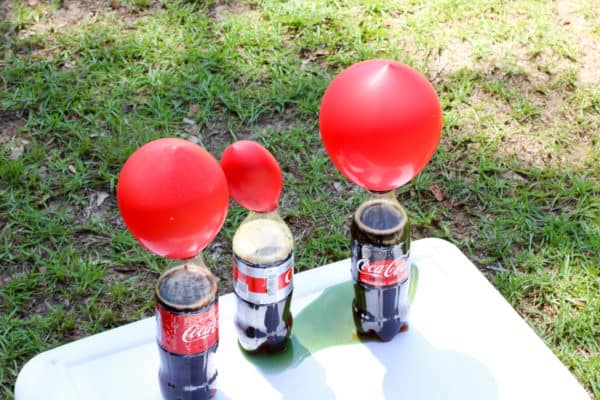
Usually, gas will begin to form immediately. Expect the soda to get fizzy, the candy to crackle, and the balloons to fill with air and foam.
If a balloon fails to expand, examine the experiment to see what happened. Typically this will happen if the balloon is not completely covering the top of the soda bottle.
YOU MAY ALSO LIKE: Baking Soda and Vinegar Balloon Experiment
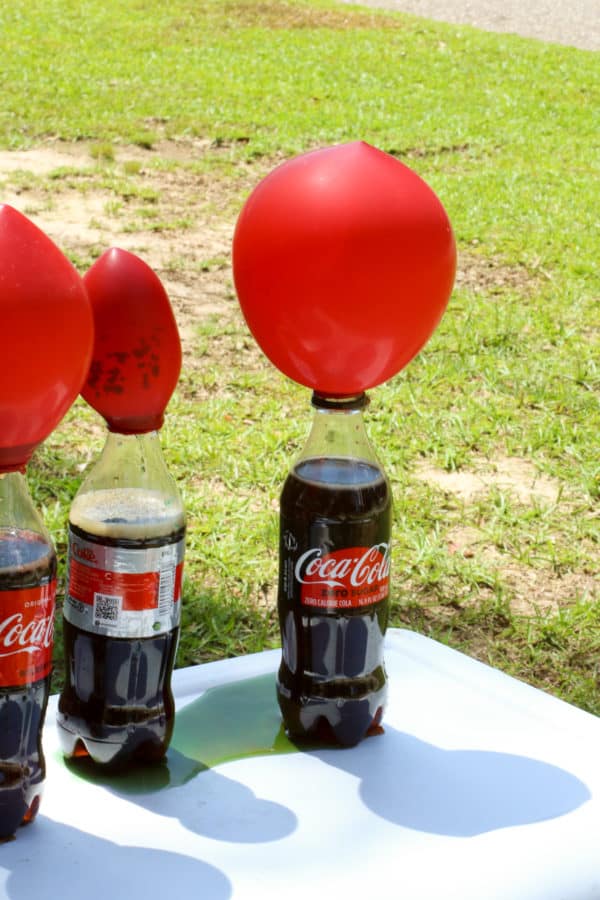
What happens when you mix pop rocks and soda?
Why do Pop Rocks pop in your mouth? As Pop Rocks dissolve, they release a very small amount of pressurized gas called carbon dioxide, which makes the popping noise!
You can read more about the patented process of Pop Rocks. However, by themselves, there is not enough gas in the candy to inflate a balloon. That’s where the soda helps!
Soda is a carbonated liquid containing lots of pressurized carbon dioxide gas. When the Pop Rocks are dropped into the soda, some of the gas in the soda collects as bubbles on the candy.
Some of this gas then escapes from the water and the corn syrup that holds it, and moves upwards. The gas fills the space at the top of the bottle and then moves up into the balloon. The balloon inflates as the volume of carbon dioxide gas increases.
This is a great example of a physical change, even though it can look like a chemical reaction has taken place.
Other experiments that work in a similar way are coke and Mentos and our dancing corn experiment!
So what happens when you eat and drink Pop Rocks and soda simultaneously? Pop Rocks and soda myth! It won’t make you explode but it might make you release some gas!
More Fun Science Experiments
- Diet Coke and Mentos Eruption
- Skittles Experiment
- Drops of Water On A Penny
- Magic Milk
- Egg In Vinegar Experiment
- Elephant Toothpaste
Printable Science Projects For Kids
If you’re looking to grab all of our printable science projects in one convenient place plus exclusive worksheets, our Science Project Pack is what you need!


